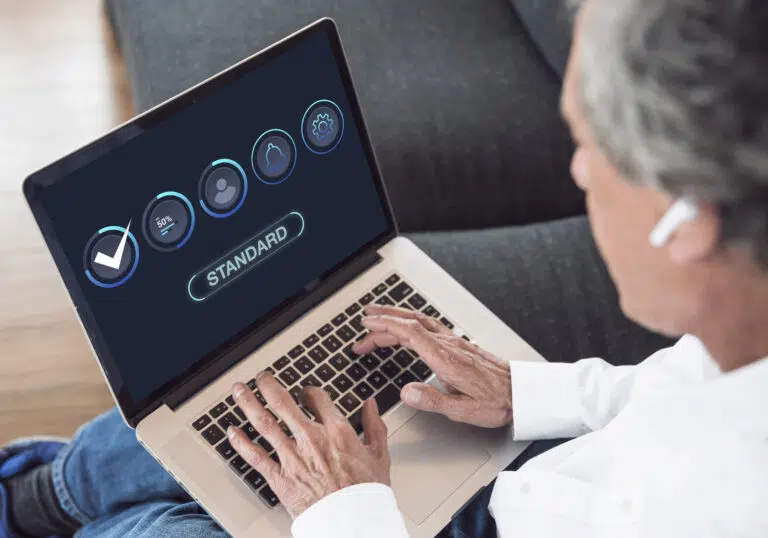Neuromarketing has revolutionized how branding services approach consumer psychology and influence purchasing decisions. By combining neuroscience, psychology, and marketing insights, modern branding services reveal the unconscious drivers behind consumer choices. In 2025, businesses that partner with branding services that understand neuromarketing principles create more compelling brand identities, design more effective campaigns, and achieve higher conversion rates.
While traditional branding services rely on what consumers say they want, neuromarketing-informed branding services uncover what audiences actually respond to on a neurological level. This deeper understanding of consumer behaviour enables professional branding services to craft brand identities and messages that resonate with both conscious and subconscious decision-making processes. This article explores how neuromarketing transforms modern branding services and provides actionable strategies for leveraging consumer psychology in brand development.
Why Neuromarketing Matters for Modern Branding Services
1. Consumer Decisions Are 95% Unconscious
Research shows that 95% of purchasing decisions happen in the subconscious mind. Traditional branding services can’t access these unconscious processes, but neuromarketing-informed branding services provide the tools to understand and influence subconscious consumer behaviour. When businesses choose branding services that apply neuromarketing principles, they tap into the real drivers of customer decisions.
Example: A luxury car brand partners with branding services that use neuromarketing research to discover that curved lines in their logo trigger feelings of comfort and safety, leading to a 23% increase in test drive requests after the branding services implement the design change.
2. Neuromarketing Eliminates Guesswork in Brand Messaging
Consumer behaviour research through neuromarketing removes the uncertainty from brand positioning. Instead of relying on focus groups that may not reveal true preferences, neuromarketing measures actual brain responses to different brand elements, providing objective data about consumer behaviour patterns.
Benefits of neuromarketing for understanding consumer behaviour:
- dentifies emotional triggers that drive brand loyalty and repeat purchases
- Reveals unconscious biases that influence product preferences and buying decisions
- Optimizes brand colors, fonts, and imagery for maximum psychological impact
- Predicts market success before expensive product launches and campaigns
Example: A food company uses neuromarketing to test packaging designs, discovering that warm colors increase purchase intent by 31% compared to cool colors, directly informing their consumer behaviour strategy.
3. Emotional Branding Through Neuromarketing Drives Loyalty
Neuromarketing reveals that emotional connections are stronger predictors of consumer behaviour than rational features. Brands that use neuromarketing to create emotional associations achieve higher customer lifetime value and stronger brand advocacy.
Example: A skincare brand applies neuromarketing insights to develop campaigns that trigger feelings of self-care and confidence, resulting in 45% higher customer retention rates and improved consumer behaviour metrics.
4. Neuromarketing Optimizes Customer Experience Design
Understanding consumer behaviour through neuromarketing helps brands design better customer experiences. From website layouts to store designs, neuromarketing principles guide decisions that reduce friction and increase conversions.
How neuromarketing improves consumer behaviour outcomes:
- Reduces cognitive load in decision-making processes and purchase funnels
- Creates visual hierarchies that guide attention to key brand messages
- Optimizes pricing strategies based on psychological pricing effects
- Designs environments that encourage desired consumer behaviour patterns
Example: An e-commerce retailer uses neuromarketing research to redesign their checkout process, reducing cart abandonment by 28% through better understanding of consumer behaviour under pressure.
Best Practices for Implementing Neuromarketing in Branding
1. Leverage Color Psychology for Brand Identity
Neuromarketing research shows that colors trigger specific emotional responses that influence consumer behaviour. Strategic color choices in branding can increase brand recognition by up to 80% and directly impact purchasing decisions.
Neuromarketing color strategies for influencing consumer behaviour:
- Red: Creates urgency and excitement, perfect for sales and call-to-action buttons
- Blue: Builds trust and reliability, ideal for financial services and healthcare brands
- Green: Suggests growth and health, effective for eco-friendly and wellness brands
- Orange: Stimulates appetite and creativity, popular in food and entertainment industries
2. Apply Cognitive Load Theory in Brand Communications
3. Use Social Proof and Scarcity Principles
Neuromarketing reveals that consumer behaviour is heavily influenced by social validation and fear of missing out. Incorporate these psychological triggers into your branding strategy for maximum impact.
Effective neuromarketing tactics for consumer behaviour:
- Customer testimonials with photos to trigger mirror neurons and social connection
- Limited-time offers that create urgency and activate loss aversion psychology
- User-generated content that provides social proof and authentic brand experiences
- Countdown timers and stock indicators that influence immediate consumer behaviour
4. Optimize Sensory Branding Elements
Neuromarketing shows that consumer behaviour responds to multi-sensory brand experiences. Brands that engage multiple senses create stronger memory associations and emotional connections.
Sensory neuromarketing strategies:
- Signature scents that trigger positive brand associations and memories
- Distinctive audio branding that creates instant brand recognition
- Tactile elements in packaging that enhance perceived value and quality
- Visual consistency that builds subconscious brand familiarity
Example: A coffee chain uses neuromarketing to develop their signature aroma, playing specific music, and training staff to create consistent multi-sensory experiences that influence consumer behaviour and increase average spend by 18%.
5. Implement Neuromarketing Testing Methods
Validate your branding decisions through neuromarketing research techniques. These methods provide objective data about consumer behaviour that traditional testing methods can’t capture.
Neuromarketing testing approaches:
- Eye-tracking studies to optimize visual brand elements and content layout
- EEG testing to measure emotional responses to brand messaging and campaigns
- Facial coding to analyze unconscious reactions to brand communications
- Implicit association tests to understand subconscious brand perceptions
6. Personalize Based on Neuromarketing Segments
Different consumer behaviour patterns require different neuromarketing approaches. Segment your audience based on psychological profiles and customize brand experiences accordingly.
Example: A financial services brand uses neuromarketing insights to create different landing pages for risk-averse vs. risk-taking personality types, improving conversion rates by 41% through targeted consumer behaviour strategies.
Final Thought
Neuromarketing isn’t about manipulation – it’s about understanding the science behind consumer behaviour to create more effective, resonant brand experiences. When brands apply neuromarketing principles ethically, they build stronger connections with customers while achieving better business results.
The most successful brands in 2025 will be those that combine creativity with scientific understanding of consumer behaviour. By leveraging neuromarketing insights, businesses can create brands that not only capture attention but also drive meaningful action and long-term loyalty.
Ready to harness the power of neuromarketing for your brand? Our comprehensive branding services combine scientific insights with creative expertise to influence consumer behaviour and build stronger brand connections. Contact Us today to discover how our professional branding services can transform your brand strategy, or explore our brand development solutions to unlock your brand’s psychological potential.





